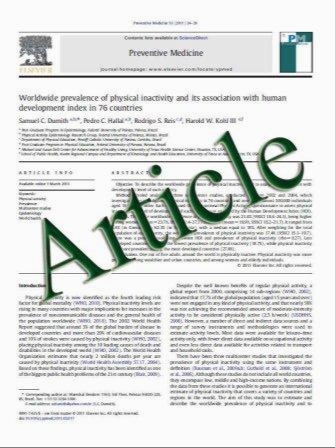Construction and validation of a simplified fracture risk assessment tool for Canadian women and men: results from the CaMos and Manitoba cohorts
- نوع فایل : کتاب
- زبان : انگلیسی
- مؤلف : W. D. Leslie & C. Berger & L. Langsetmo & L. M. Lix & J. D. Adachi & D. A. Hanley & G. Ioannidis & R. G. Josse & C. S. Kovacs & T. Towheed & S. Kais
- چاپ و سال / کشور: 2010
Description
Summary A procedure for creating a simplified version of fracture risk assessment tool (FRAX®) is described. Calibration, fracture prediction, and concordance were compared with the full FRAX tool using two large, complementary Canadian datasets. Introduction The Canadian Association of Radiologists and Osteoporosis Canada (CAROC) system for fracture risk assessment is based upon sex, age, bone mineral density (BMD), prior fragility fracture, and glucocorticoid use. CAROC does not require computer or web access, and categorizes 10-year major osteoporotic fracture risk as low (<10%), moderate (10–20%), or high (>20%). Methods Basal CAROC fracture risk tables (by age, sex, and femoral neck BMD) were constructed from Canadian FRAX probabilities for major osteoporotic fractures (adjusted for prevalent clinical risk factors). We assessed categorization and fracture prediction with the updated CAROC system in the CaMos and Manitoba BMD cohorts. Results The new CAROC system demonstrated high concordance with the Canadian FRAX tool for risk category in both the CaMos and Manitoba cohorts (89% and 88%). Ten-year fracture outcomes in CaMos and Manitoba BMD cohorts showed good discrimination and calibration for both CAROC (6.1–6.5% in low-risk, 13.5– 14.6% in moderate-risk, and 22.3–29.1% in high-risk individuals) and FRAX (6.1–6.6% in low-risk, 14.4– 16.1% in moderate-risk, and 23.4–31.0% in high-risk individuals). Reclassification from the CAROC risk category to a different risk category under FRAX occurred in <5% for low-risk, 20–24% for moderate-risk, and 27–30% for highrisk individuals. Reclassified individuals had 10-year fracture outcomes that were still within or close to the original nominal-risk range.. Conclusion The new CAROC system is well calibrated to the Canadian population and shows a high degree of concordance with the Canadian FRAX tool. The CAROC system provides s a simple alternative when it is not feasible to use the full Canadian FRAX tool.
Osteoporos Int (2011) 22:1873–1883 DOI 10.1007/s00198-010-1445-5 Received: 4 August 2010 / Accepted: 13 September 2010 / Published online: 22 October 2010


